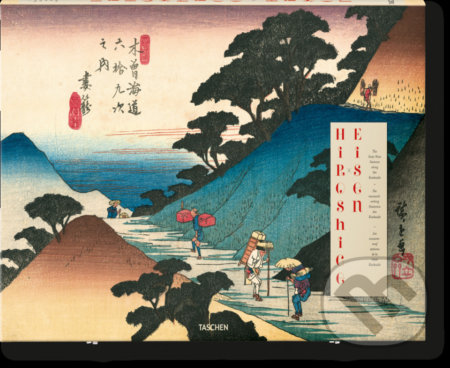
Japanese Woodblock Prints
Knihu koupíte v
3 e-shopech
od
369 Kč
Pokud se vám po kliknutí na tlačítko "Do obchodu" nezobrazí stránka knihy ve vybraném e-shopu, je třeba vypnout AdBlock ve vašem prohlížeči pro naši stránku.
Návod na vypnutí je například na adrese https://o.seznam.cz/jak-vypnout-adblock/#1.
Krátký popis
The Japanese woodblock print showcased breathtaking landscapes,
blush-inducing erotica, ghosts and demons that torment the living,
and made sumo wrestlers and kabuki actors into rock stars. This
book reveals the most exceptional prints from 1710–1925, drawing
from the finest impressionsof museums and private collections
worldwide. Masterpieces of a unique art form From Edouard
Manet’s portrait of naturalist writer Émile Zola sitting among his
Japanese art finds to Van Gogh’s meticulous copies of the Hiroshige
prints he devotedly collected, 19th-century pioneers of European
modernism made no secret of their love of Japanese art. In all its
sensuality, freedom, and effervescence, the woodblock print is
single-handedly credited with the wave of japonaiserie that first
enthralled France and, later, all of Europe—but often remains
misunderstood as an “exotic” artifact that helped inspire Western
creativity.The fact is that the Japanese woodblock print is a
phenomenon of which there exists no Western equivalent. Some of the
most disruptive ideas in modern art—including, as Karl Marx put it,
that “all that is solid melts into air”—were invented in Japan in
the 1700s and expressed like never before in the designs of such
masters as Hokusai, Utamaro, and Hiroshige in the early 19th
century.This volume lifts the veil on a much-loved but
little-understood art form by presenting the most exceptional
Japanese woodblock prints in their historical context. Ranging from
the 17th-century development of decadent ukiyo-e, or “pictures of
the floating world,” to the decline and later resurgence of prints
in the early 20th century, the images collected in this edition
make up a record not only of a unique genre in art history, but
also of the shifting mores and cultural development of Japan.We
discover the four pillars of the woodblock print—beauties, actors,
landscapes, and bird-and-flower compositions—alongside depictions
of sumo wrestlers, kabuki actors, or enticing courtesans—rock stars
who populated the “floating world” and whose fan bases fueled the
frenzied production of woodblock prints. We delve into the
horrifying and the obscure in prints where demons, ghosts, and
otherworldly creatures torment the living—stunning images that
continue to influence Japanese manga, film, and video games to this
day. We witness how, in their incredible breadth, from everyday
scenes to erotica, the martial to the mythological, these works are
united by the technical mastery and infallible eye of their
creators and how, with tremendous ingenuity and tongue-in-cheek
wit, publishers and artists alike fought to circumvent government
censorship.This edition compiles the finest extant impressions from
museums and private collections across the globe, accompanied by
descriptions to guide us through this frantic period in Japanese
art history.
Vývoj ceny
Aktuální Ø cena knihy Japanese Woodblock Prints je 382 Kč
Výběr knih autora
Andreas Marks
Zobrazit všechny knihy autora
Andreas Marks
Výběr knih vydavatele
Taschen
Zobrazit všechny knihy vydavatele
Taschen
Naše tipy
- Právě probíhající akce a slevy na knihy
-
Slevový kód
DOPZDA25AFKDKnihydobrovsky.cz | do 07.12.2025 -
Knihydobrovsky.cz | do 12.12.2025
-
Knihydobrovsky.cz | do 17.12.2025
-
Knihydobrovsky.cz | do 24.12.2025
-
Knihydobrovsky.cz | do 24.12.2025
-
Bookshop.cz | do 31.12.2025
- zobrazit všechny akce



















